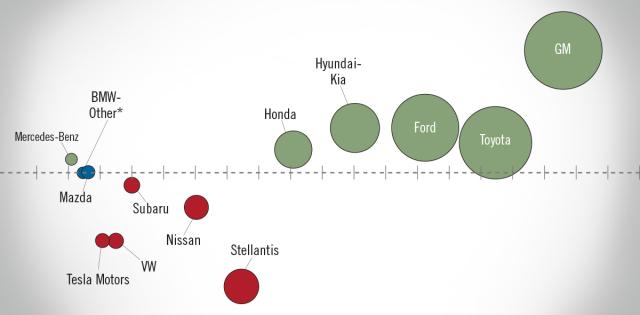ByLast week, an item in Automotive News, that many readers may have glossed over, nearly caused me fall out of my chair. The story was about a recent FICO survey showing that the number of customers who acquired new-vehicle financing at the dealership had dropped 10 percentage points from 2017 to 2018, and was now down to 63 percent.
That was certainly news to me. But I suspected something was off when I read that the 2017 number was 73 percent. Because that’s just not accurate. As we know, the true figure is much higher than that.
So I looked at the JD Power PIN data. Sure enough, my concerns that I had somehow missed an absolutely earth-shattering development in auto financing were unfounded.
According to the PIN data, the share of new-vehicle purchasers who utilized dealer-assisted financing was 83.1 percent in 2017, and 83.7 percent in 2018, confirming that; 1) it hadn’t moved; and 2) was far higher than suggested by FICO.
So what happened? Well, the Automotive News story was not inaccurate. That is because it was just reporting on a FICO survey. But the FICO survey data is – to be blunt – just way, way off target.
A few things are probably happening here. The first is the sample size. FICO surveyed 510 customers in the U.S. That’s compared to millions of transactions from more than 14,000 reporting retailers that make up the PIN dataset.
The second is related to how the data was collected. FICO was using a customer survey, meaning their data was dependent on customer recollections of how they financed new-vehicle purchases. But one could easily see an incredibly high rate of unintentional misreporting here, given that a customers’ understanding of what type of financing they engaged in might be inaccurate. For example, does every customer who obtains dealer-assisted financing from a lending source that doesn’t contain the name of the automaker or the dealership understand that is not, in fact, a direct loan that they obtained themselves? My guess is probably not.
The PIN data, on the other hand, is based solely on how the transaction actually occurred; it’s rock solid.
To be fair, Auto News’ coverage of this FICO survey was primarily to convey FICO’s findings on what customers say they intend to do in the future. In this regard, there is potentially some interest in knowing that, according to FICO, “many” customers who chose dealer-assisted financing for their last vehicle purchase would not choose it again. But there are numerous problems with how the alternative options were explained. And, of course, there’s still the glaring sample-size problem. As an economist, I would need to see much more robust data and presentation before I even started drawing any conclusions.
The one conclusion I can draw as a result of this is that dealer-assisted financing is as healthy and robust today as it was last week, last month and last year.












